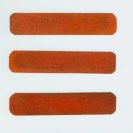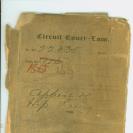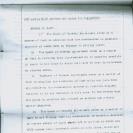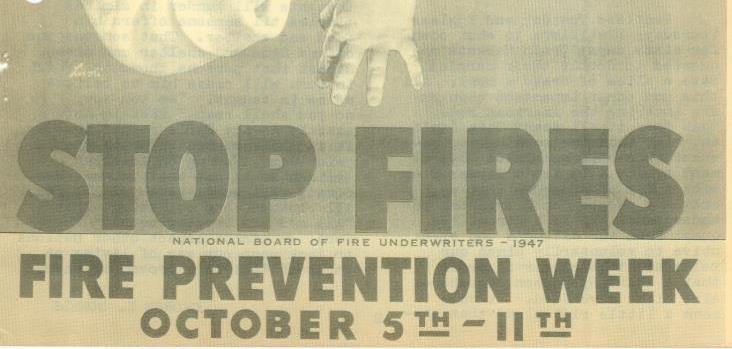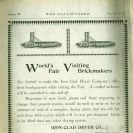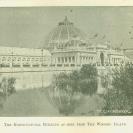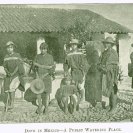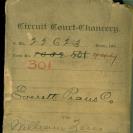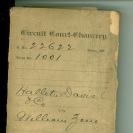- Also On
National Archives at Chicago shared a link.
Today's Document from the National Archives can be found in our holdings - The Verdict of "U.S. v. Alphonse Capone" on October 17, 1931. http://www.archives.gov/historical-docs/todays-doc/
Keep in mind that Today's Document is also available as a mobile app for android and iPhones.- RecommendationsSee All
 Felicia AlstonEverybody needs to like this page if you live in Chicago1 · about 9 months ago
Felicia AlstonEverybody needs to like this page if you live in Chicago1 · about 9 months ago Sandy HowleyAm anxious for the Archives to send me naturalization info on my great-grandfather. Would LOVE to visit sometime!about 10 months ago
Sandy HowleyAm anxious for the Archives to send me naturalization info on my great-grandfather. Would LOVE to visit sometime!about 10 months ago Saundra ShelleyThis location is great for me. Just right down the street. On Pulaski Rd. I love going there. Make sure you take a sweater.about 10 months ago
Saundra ShelleyThis location is great for me. Just right down the street. On Pulaski Rd. I love going there. Make sure you take a sweater.about 10 months ago Barbara PomierskiNational Archives at Chicago is a great place for research. It's fun to find original documents like Declaration of Intention and Petition for Naturalization for ancestors who immigrated to U.S. and settled in Chicago.about 10 months ago
Barbara PomierskiNational Archives at Chicago is a great place for research. It's fun to find original documents like Declaration of Intention and Petition for Naturalization for ancestors who immigrated to U.S. and settled in Chicago.about 10 months ago
- Customs Agency Confusion (4 photos)T-Cubed Here, While it may seem like T-Cubed has been particularly hard on the U.S. Customs Agency, it has not been without cause. Here again is another case, “Charles D. Stone Co. v. John Clark Collector” U.S. Circuit Court, Northern Illin...ois, Case #22754, where one can only ask, “What were they thinking?" These nifty pictures reflect what clearly are religious statues intended for churches [think very large] and as such were to be duty free. However the agent did not recognize these statues as such and levied a duty more appropriate for the retail market. Mr. Stone, a great name for one in his business, won his appeal. The written document reflect the opinion of the appellate judge, probable not what he was thinking.See More
- LikesSee All
- National Archives at SeattleGovernment Organization
- National Archives at AnchorageGovernment Organization
- US National Archives Students and InternsGovernment Organization
- Great Lakes Naval MuseumGovernment Organization
National Archives at Chicago shared a link.
So what does football have to do with archival repositories?
Read a former high school teacher and Primarily Teaching participant's approach to primary source research as a PhD student at http://lakefronthistorian.com/2012/10/01/the-archiv...e-blitz/.See More
Primarily Teaching is a week-long summer workshop for educators held at National Archives facilities across the country Further information is available at www.archives.gov/education/primarily-teaching- Cards or Chips (3 photos)T-Cubed Here,
Ah, the case of Hip Lung, importer extraordinary of Chicago. Hip Lung has been in our case files before but the cases were not fully documented. But in case # 22535 in the U.S. Circuit Court, Northern Illinois, we have a few a...rtifacts and a very clear decision. When goods are imported they fall into categories and then the import tax is levied. The little red strips you see were classified, if you can believe it, as playing cards. These would be the very first playing cards with invisible letters should you chose to believe that these are playing cards. It was up to Hip Lung to challenge this classification, and he did and he won the appeal. In fact these are counters or as we might say "chips" used in card playing not the cards themselves. Need I add," 'Hip, Hip, Hooray!!,' for Hip?"See More - It's Fire Prevention Week. The Decatur Signal Depot dedicated it's weekly newsletter to this event in 1947. Found in RG 338, Records of the U.S. Army Commands, National Archives at Chicago.
National Archives at Chicago shared a link.
National History Day Teachers and Students - Check out the latest resource for this year's NHD journey! http://docsteach.org/home/national-history-day- The Clay-Worker (6 photos)T-Cubed Here,
Brick making, a thriving industry across the Midwest at the turn of the Century, sported its own trade paper and magazine. Within each volume were the typical advertisement for industry products, but the Clay Worker went a ste...p further and offered popular articles on foreign countries, pictures of actual clay workers and in the 1893 edition several feature articles on the Chicago World's Fair. As before the actual case, Iron Clad Drier Co. v Harland Brick Co. #22529, in the U.S. Circuit Court, Northern District of Illinois, that pitted two Chicago firms against each other over processing patent rights, is not the story here. Rather the pictures and feature articles hold our attention. Enjoy your trip to the 1890s.See More National Archives at Chicago shared a link.
It is not too late to register for our 15th Annual Civil War Symposium and Reenactment at The First Division Museum at Cantigny on Saturday, October 6.
Speakers include Peter Cozzens on the 1862 Shenandoah Valley Campaign; Judith Ann Gi...esberg on Women of the Civil War North; Richard S. Slotkin on Lincoln, Emancipation and the McClellan Problem; and Timothy B. Smith on the Terrain Factor at Shiloh.See More
During lunch, chat with fellow Symposium participants, meet Abraham Lincoln and Harriet Tubman, tour the Soldiers’ Encampment, watch Civil War soldiers clash, or tour the outstanding museum and grounds at Cantigny.
Speakers, activities, and further information including a registration form can be found at http://www.archives.gov/great-lakes/public/programs/calendar.html- ActivityOctoberPeople Who Like ThisVisits21
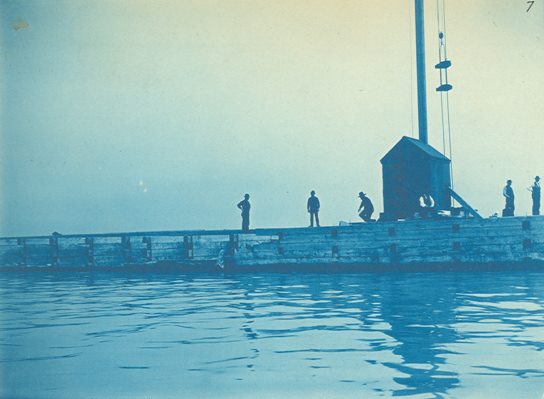






![Photo: T-Cubed Here,
While it may seem like T-Cubed has been particularly hard on the U.S. Customs Agency, it has not been without cause. Here again is another case, “Charles D. Stone Co. v. John Clark Collector” U.S. Circuit Court, Northern Illinois, Case #22754, where one can only ask, “What were they thinking?" These nifty pictures reflect what clearly are religious statues intended for churches [think very large] and as such were to be duty free. However the agent did not recognize these statues as such and levied a duty more appropriate for the retail market. Mr. Stone, a great name for one in his business, won his appeal. The written document reflect the opinion of the appellate judge, probable not what he was thinking.](https://cybercemetery.unt.edu/archive/oilspill/20121018081424im_/https://sphotos-a.xx.fbcdn.net/hphotos-snc7/c67.0.403.403/p403x403/320484_10151212649993769_1374163632_n.jpg)
![Photo: T-Cubed Here,
While it may seem like T-Cubed has been particularly hard on the U.S. Customs Agency, it has not been without cause. Here again is another case, “Charles D. Stone Co. v. John Clark Collector” U.S. Circuit Court, Northern Illinois, Case #22754, where one can only ask, “What were they thinking?" These nifty pictures reflect what clearly are religious statues intended for churches [think very large] and as such were to be duty free. However the agent did not recognize these statues as such and levied a duty more appropriate for the retail market. Mr. Stone, a great name for one in his business, won his appeal. The written document reflect the opinion of the appellate judge, probable not what he was thinking.](https://cybercemetery.unt.edu/archive/oilspill/20121018081424im_/https://sphotos-b.xx.fbcdn.net/hphotos-ash4/c21.0.133.133/p133x133/320484_10151212650008769_2091837609_n.jpg)
![Photo: T-Cubed Here,
While it may seem like T-Cubed has been particularly hard on the U.S. Customs Agency, it has not been without cause. Here again is another case, “Charles D. Stone Co. v. John Clark Collector” U.S. Circuit Court, Northern Illinois, Case #22754, where one can only ask, “What were they thinking?" These nifty pictures reflect what clearly are religious statues intended for churches [think very large] and as such were to be duty free. However the agent did not recognize these statues as such and levied a duty more appropriate for the retail market. Mr. Stone, a great name for one in his business, won his appeal. The written document reflect the opinion of the appellate judge, probable not what he was thinking.](https://cybercemetery.unt.edu/archive/oilspill/20121018081424im_/https://sphotos-b.xx.fbcdn.net/hphotos-snc7/c13.0.133.133/p133x133/320484_10151212650013769_148378530_n.jpg)
![Photo: T-Cubed Here,
While it may seem like T-Cubed has been particularly hard on the U.S. Customs Agency, it has not been without cause. Here again is another case, “Charles D. Stone Co. v. John Clark Collector” U.S. Circuit Court, Northern Illinois, Case #22754, where one can only ask, “What were they thinking?" These nifty pictures reflect what clearly are religious statues intended for churches [think very large] and as such were to be duty free. However the agent did not recognize these statues as such and levied a duty more appropriate for the retail market. Mr. Stone, a great name for one in his business, won his appeal. The written document reflect the opinion of the appellate judge, probable not what he was thinking.](https://cybercemetery.unt.edu/archive/oilspill/20121018081424im_/https://sphotos-b.xx.fbcdn.net/hphotos-ash4/c0.0.133.133/p133x133/320484_10151212650023769_1335938245_n.jpg)





